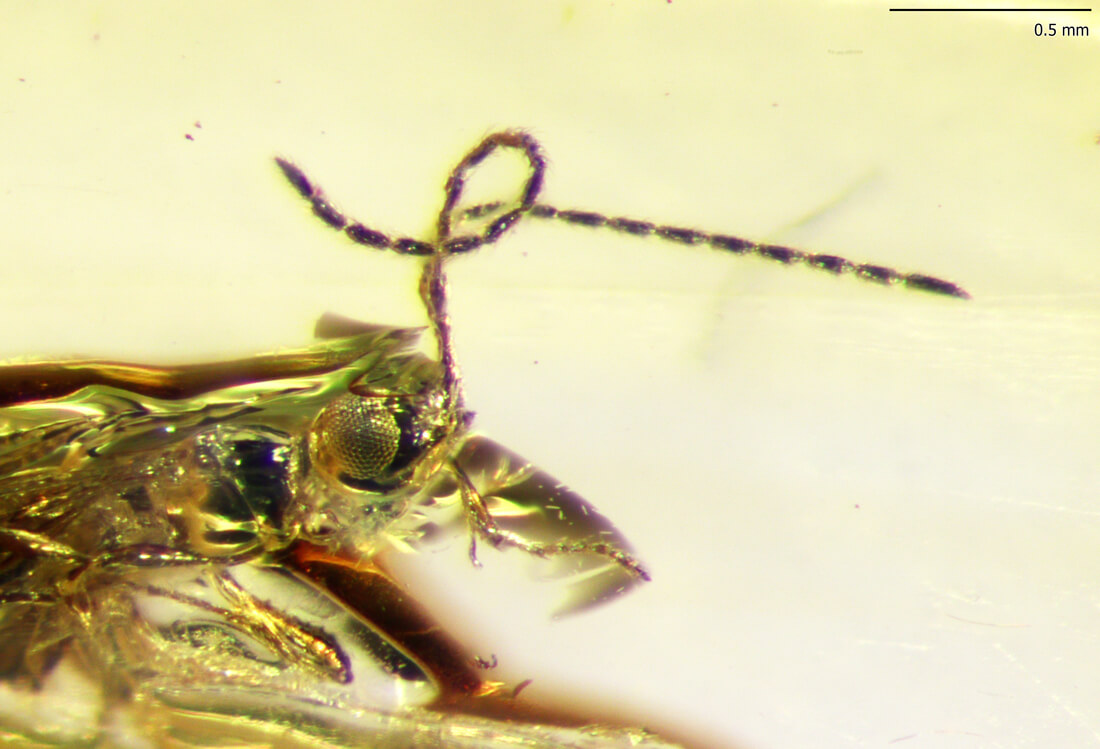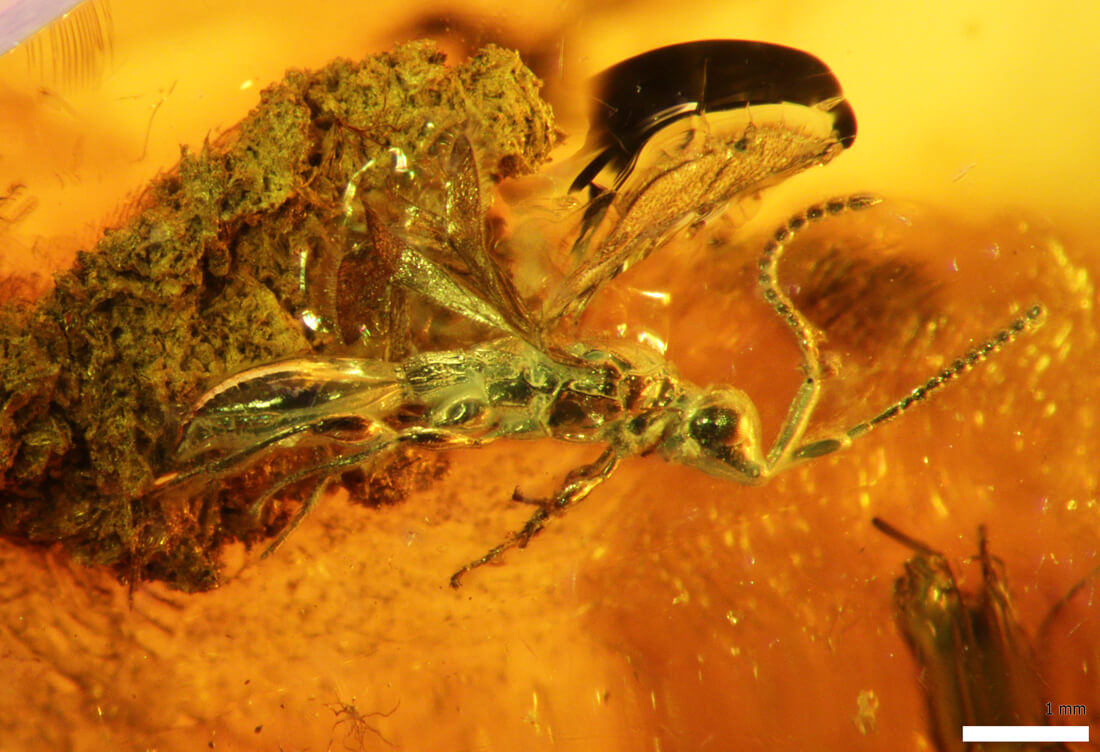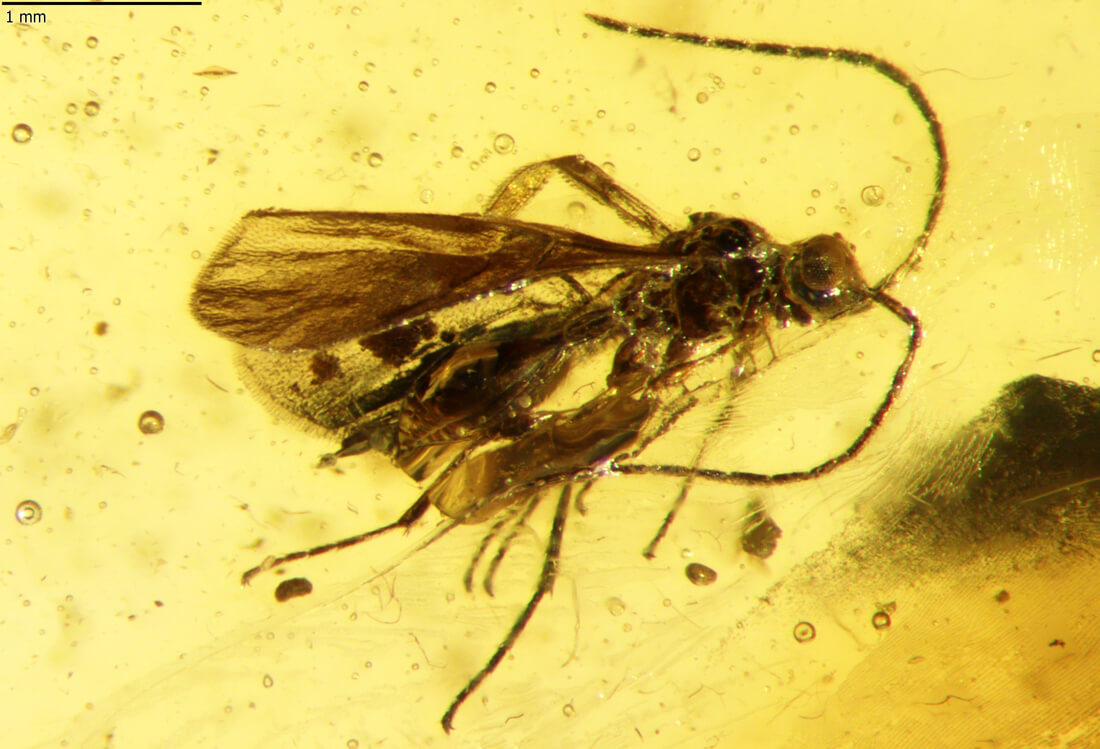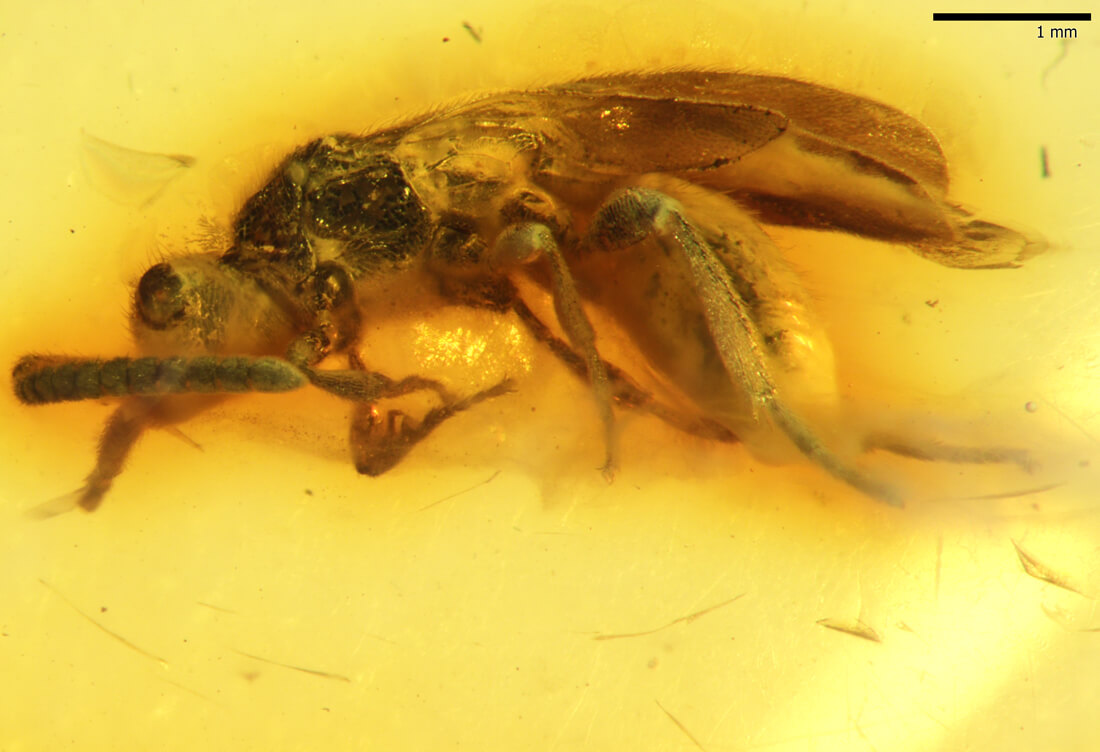10 new species of parasitic wasps found in amber collection
Four years ago, the Natural History Museum of Denmark bought a large amber collection with help from three Danish foundations. Now it turns out that 10 insects, caught in a lump of resin between 35 and 45 million years ago, are until now undiscovered species of prehistoric parasitic wasps.

In 2018, the Natural History Museum of Denmark bought a large private collection of approx. 60,000 pieces of amber from a private collector. Most of the pieces are Baltic amber and collected on the west coast of Jutland, or along the Baltic coast in Russia (Kaliningrad) and Latvia. The amber pieces are interesting to the museum because they contain fossils that were captured in resin, which has since become amber. Most of these fossils are insects, but other animal groups and plants are also represented.
As the work of integrating the new amber collection draws to a close, the first research projects on the material have begun. A recently published scientific article describes 10 new species of parasitic wasps, found in the new amber collection. The article is written in a collaboration between Manuel Brazidec, PhD student at the University of Rennes in France, and Lars Vilhelmsen, curator of the amber collection.
The purchase of the collection came about with support from the Augustinus Foundation, the Knud Højgaard Foundation and the VILLUM FOUNDATION. In addition to the purchase of the collection, the funds also supported the hiring of a full-time employee, Sree Gayathree Selvantharan, for two years. Sree has repackaged the new collection so that it can be included in the museum's large collection of more than 14 million objects, and registered the amber pieces so that they are available in the museum's public collection databases.
- The registration is a very important work, because it makes it possible to explore our collections for anyone who has an interest in science, says Lars Vilhelmsen, curator of the amber collection at the Natural History Museum of Denmark.

When formally describing new species, whether living or fossil, they must have a scientific name, consisting of a genus and a species name (eg Homo sapiens). One can name species by their appearance, their locality or persons or organizations one wishes to honor.
- In this case, we have chosen to name three of the new species of parasitic wasps in amber after the foundations that have supported the purchase of the amber collection, thus making the registration and exploration of them possible. This has resulted in the names Basalys villumi, Belyta knudhoejgaardi and Pantolyta augustinusii after respectively The VILLUM FOUNDATION, the Knud Højgaard Foundation and the Augustinus Foundation, says Lars Vilhelmsen.

Facts
The parasitic wasps belong to the family Diapriidae (no Danish name); they are described in a collaboration between Manuel Brazidec, PhD student at the University of Rennes, France, and Lars Vilhelmsen, curator of the amber collection. In the spring of 2021, Manuel received approx. 200 pieces with fossils of Diapriidae on loan, and it was during the review of this material that he found the 10 new species that have now been described.
Diapriidae is a relatively large but poorly explored family with more than 2,000 living known species, but there are at least as many undescribed. Therefore, it is not surprising that the review of the fossil material reveals many new species, also because they are rather small wasps with a body length of a few mm, which are easily caught in the resin from which the amber originated. The biology of Diapriidae is unknown to most extant species; most species where one knows something about the way of life are parasites on different species of flies; however, some are thought to be associated with ants.
The naming of the 10 new species will be published on Wednesday 13 April in the European Journal of Taxonomy

Contact
Bent Bøkman
PR & Press
Natural History Museum of Denmark
Ph.: +45 5383 3041
Mail: bent.boekman@snm.ku.dk
Lars Vilhelmsen
Associate Professor, Curator
Natural History Museum of Denmark
Ph.: +45 2911 9113
Mail: lbvilhelmsen@snm.ku.dk
